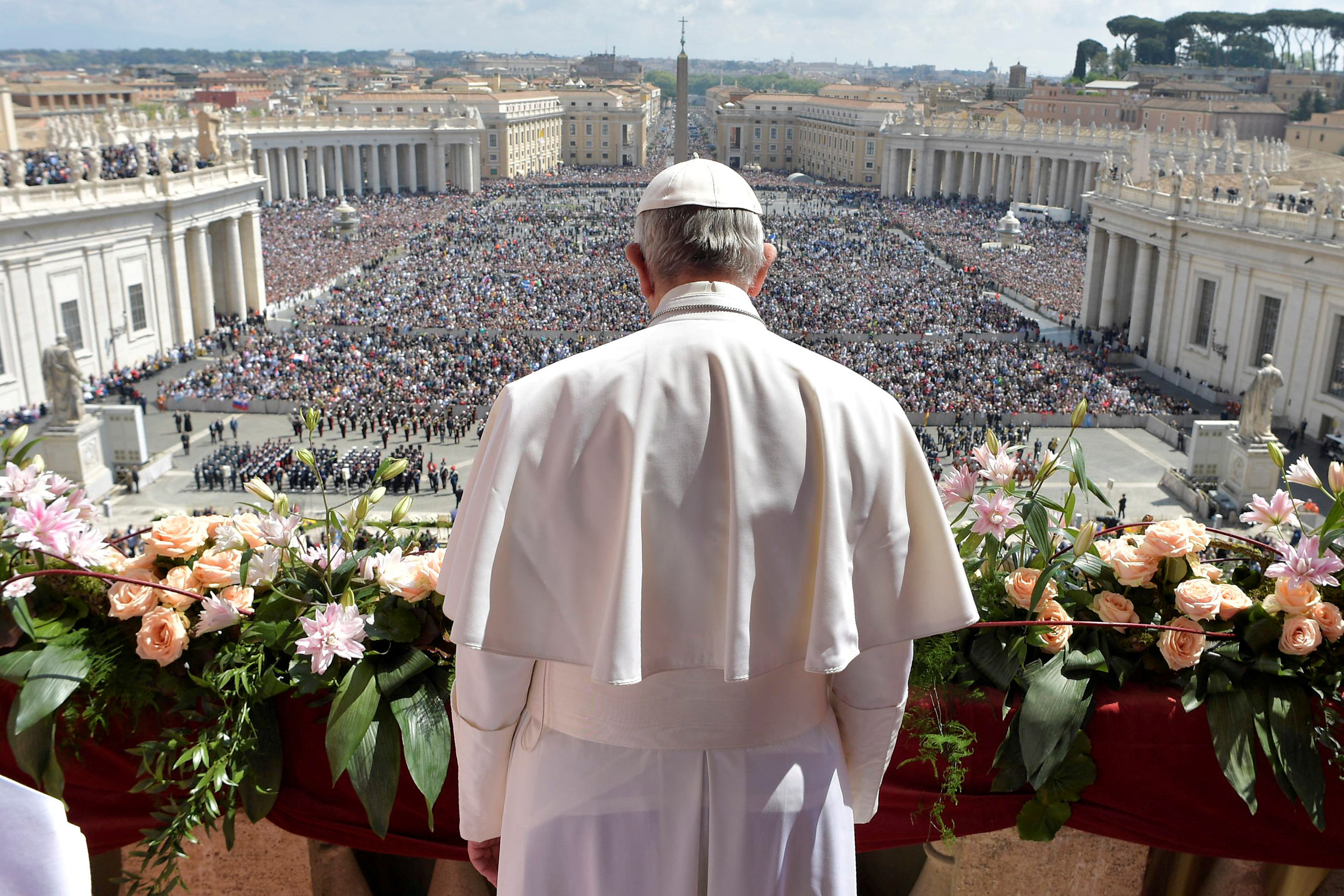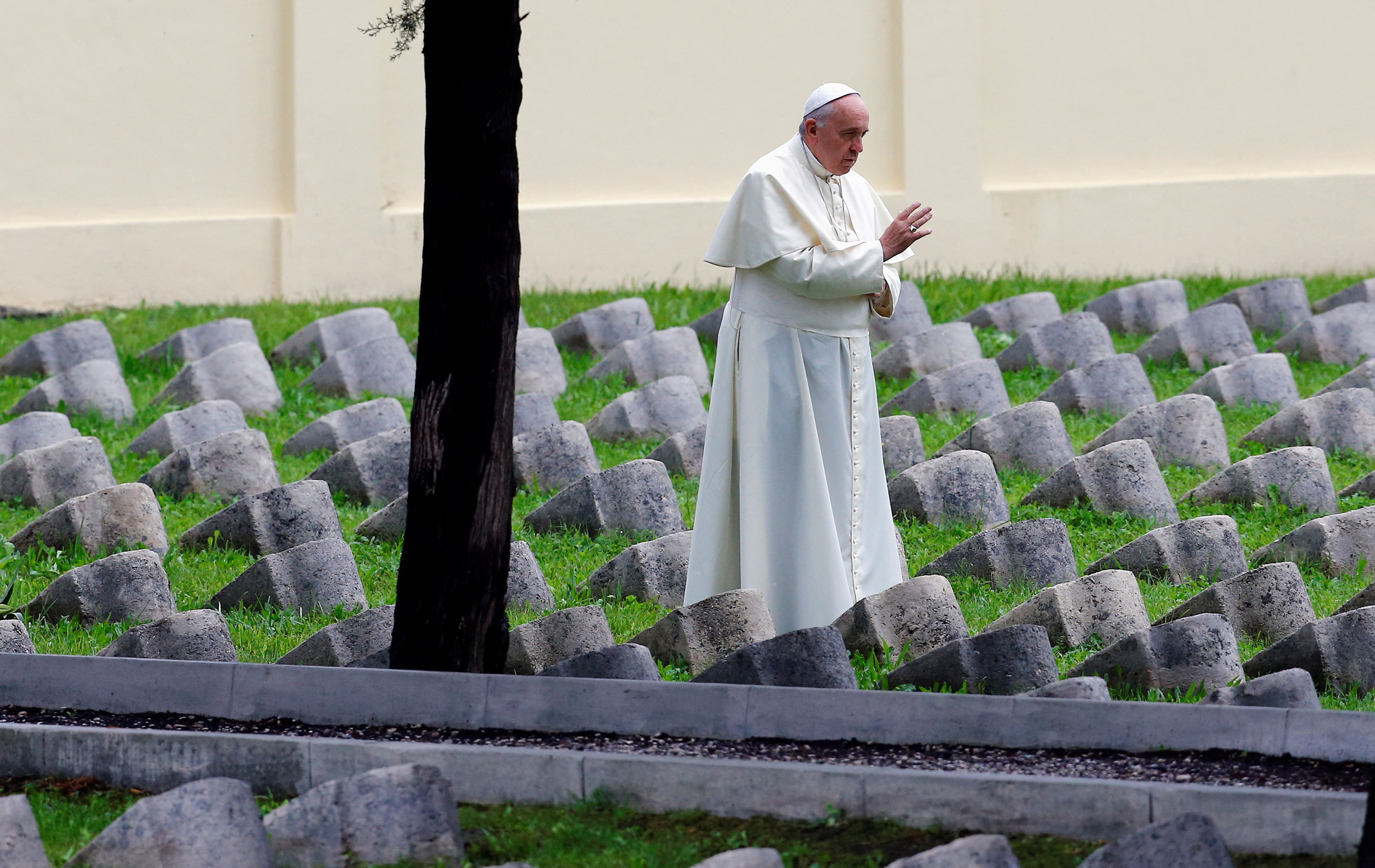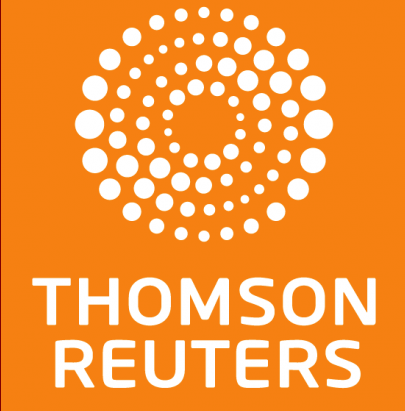Pope Francis, the first Latin American leader of the Roman Catholic Church, died on Monday, ending an often turbulent reign in which he sought to overhaul an ancient and divided institution.
He was 88, and had suffered a serious bout of double pneumonia this year, but his death came as a shock after he had been driven around St. Peter’s Square in an open-air popemobile to greet cheering crowds on Easter Sunday.
“Dear brothers and sisters, it is with profound sadness I must announce the death of our Holy Father Francis,” Cardinal Kevin Farrell announced on the Vatican’s TV channel.
“At 7:35 (0535 GMT) this morning the Bishop of Rome, Francis, returned to the house of the Father.”
The Vatican did not immediately give a cause of death. Italian media speculated that he might have suffered a stroke or brain haemorrhage.
Farrell will preside over a rite at 8 p.m. (1800 GMT) on Monday when the pope’s body will be placed into a casket. A spokesman said his coffin might be moved to St. Peter’s Basilica as early as Wednesday morning to allow the faithful to pay their respects. No date has yet been set for the funeral.
Tributes for Francis poured in from around the world, with many leaders praising his humility. His native Argentina ordered seven days of mourning, as did neighbouring Brazil.
“The pope of the poor has left us, the pope of the marginalised,” said Jorge Garcia Cuerva, the archbishop of Buenos Aires, a position Francis once held.
Francis had on Sunday made his first prolonged public appearance since being discharged from hospital on March 23 following a 38-day stay for pneumonia, occasionally waving to onlookers and greeting a child who was brought to his side.
In an Easter Sunday message read aloud by an aide as the pope looked on from the main balcony of St. Peter’s Basilica, the pontiff had reiterated his call for an immediate ceasefire in Gaza – a conflict he had long railed against.
At the Vatican, locals, tourists and pilgrims visiting for Easter expressed their shock and grief.
“This is something that really hits you hard,” said Emanuela Tinari, from Rome. “He was a pope who brought so many people closer to the church. He was not appreciated by everyone. But he definitely was by ordinary people.”
FINAL MEETINGS
Doctors had prescribed two months of rest when the pope left hospital last month but he appeared on a number of occasions and met Britain’s King Charles in April and had a brief meeting on Sunday with visiting U.S. Vice President JD Vance.
World leaders paid tribute to the pope, praised his efforts to reform the worldwide church and offered condolences to the world’s 1.4 billion Catholics.
“Rest in Peace Pope Francis! May God Bless him and all who loved him,” said U.S. President Donald Trump, who the pope had criticised, especially for his hardline on immigration.
Italian Prime Minister Giorgia Meloni mourned the departure of “a great man, a great shepherd”.
The outspoken president of Argentina, Javier Milei, had clashed with the pope in the past, branding him at one point the devil’s representative on earth. But he changed his tune after taking office in 2023 and mourned his death on Monday.
“Despite differences that seem minor today, having been able to know him in his goodness and wisdom was a true honor for me,” Milei said on X.
Russian President Vladimir Putin hailed Francis as an outstanding man, the Kremlin said. Ukrainian President Volodymyr Zelenskiy said he knew how to foster unity and give hope.
FUTURE CONCLAVE
A conclave to elect a new pope normally takes place between 15 and 20 days after the death of a pontiff. Some 135 cardinals are eligible to take part in the highly secretive ballot which can stretch out over days. At present there is no clear frontrunner to succeed Francis.
Born Jorge Mario Bergoglio, the Argentine cleric’s election as pope on March 13, 2013, surprised many Church watchers who had seen him as an outsider.
He sought to project simplicity into the grand role and never took possession of the ornate papal apartments in the Apostolic Palace used by his predecessors, saying he preferred to live in a community setting for his “psychological health”.
He initiated changes within the Vatican, emphasising transparency, accountability and financial reform, and appointed more women to senior posts in its hierarchy. However, Francis was also viewed as a haphazard leader, often blindsiding Vatican officials with his off-the-cuff comments.
He struggled to get a grip on the Church’s crisis over sexual abuse by clerics and he inherited a Church torn by infighting in the Vatican bureaucracy, and was elected with a clear mandate to restore order.
But as his papacy progressed, he faced criticism from conservatives, who accused him of trashing cherished traditions. He also drew the ire of progressives, who felt he should have done much more to reshape the 2,000-year-old Church.
While he battled with internal dissent, Francis became a global superstar, drawing huge crowds on his many foreign travels as he tirelessly promoted interfaith dialogue and peace, taking the side of the marginalised, such as migrants.
Unique in modern times, there were two men wearing white in the Vatican for much of Francis’ rule, with his predecessor Benedict opting to continue to live in the Holy See after his shock resignation in 2013. Benedict, a hero of the conservative cause, died in December 2022.
Francis appointed nearly 80% of the cardinal electors who will choose the next pope, increasing the possibility that his successor will continue his progressive policies, despite the strong pushback from traditionalists.
The Vatican said a ceremony planned for Sunday, April 27, when Carlo Acutis was to become the first Catholic saint of the millennial generation, had been postponed.
What happens now, after the death of Pope Francis
Here is what happens next in the Roman Catholic Church following the death of Pope Francis, which was announced by the Vatican on Monday. The rituals mark the end of one papacy and the start of the next:
** The pope’s camerlengo (chamberlain), Cardinal Kevin Farrell, officially confirms the death. He then seals the pope’s private apartment and prepares the funeral.
** The camerlengo and three assistants decide when the pope’s coffin will be taken into St. Peter’s Basilica for public viewing. They also make sure the pope’s “Fisherman’s Ring” and his lead seal are broken so they cannot be used by anyone else. No autopsy is performed.
** Mourning rites last nine days, with the date of the funeral and burial to be decided by the cardinals. The funeral would normally be held four to six days after the death, in St. Peter’s Square. Francis had said that unlike many predecessors, he would not be laid to rest in the crypt of St. Peter’s Basilica, but in Rome’s St. Mary Major Basilica. He also asked to be buried in a simple wooden casket.
** The College of Cardinals oversees day-to-day business during the interregnum. They have limited power and much of the central Church administration grinds to a halt.
** The conclave to elect a new pope starts in the Vatican’s Sistine Chapel between 15 and 20 days after the death. The cardinals, who are confined to the Vatican for the duration of the conclave, decide the exact day.
** All cardinals under the age of 80 can take part in the secret ballot. They need a majority of at least two-thirds plus one to elect the new pope, so the voting can take several rounds spread over numerous days. When the election is concluded, the new pope is asked if he accepts and what name he wishes to take.
** The world learns a pope has been elected when an official burns the paper ballots with special chemicals to make white smoke pour from the chapel’s chimney. They use other chemicals to make black smoke indicating an inconclusive vote.
** The dean of the College of Cardinals steps onto the central balcony of St. Peter’s Basilica to announce “Habemus Papam” (We have a pope). The new pope then appears and gives the crowd in the square his blessing.








Click here to change your cookie preferences